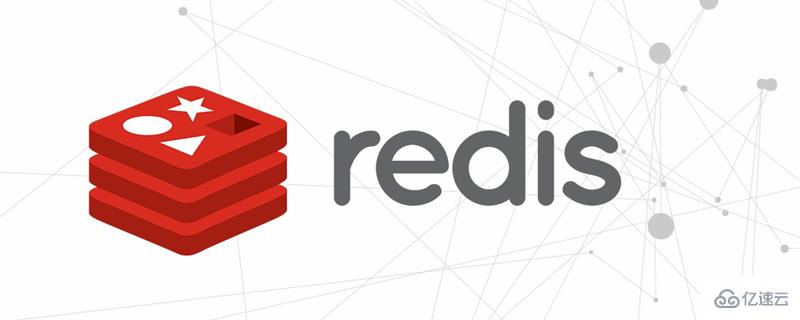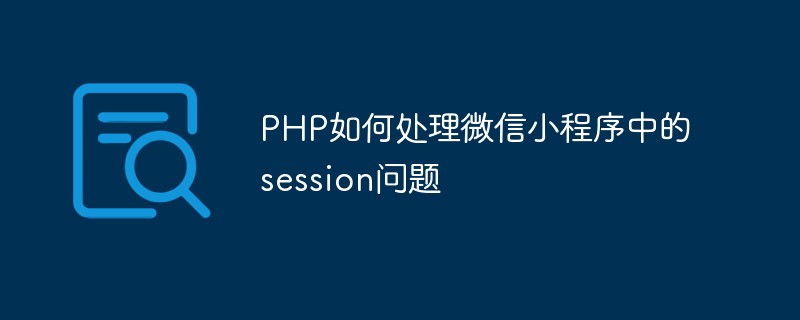This article mainly introduces the session learning in PHP. It has certain reference value. Now I share it with you. Friends in need can refer to it.
Cookies and sessions are easy to confuse for newbies in web development. Two concepts, clarifying the two will help to better understand web interaction. Personally, I think the main differences between session and cookie are as follows:
cookie
The information is saved on the client
The specific implementation is determined by the client The end is responsible
The size and quantity of data are generally limited
Data is easily stolen and tampered
session
Data is saved on the server side
The server is responsible for the specific implementation
In principle, the size and quantity of data are unlimited
High security and strong credibility
Session in the narrow sense refers to the session id and associated data in the web session, and session in the broad sense refers to the interactive session between the communicating parties. For example, user login is a session interaction, withdrawing money from an ATM is a session interaction, and so on.
Details of session
The main function of session is to identify a session and save data during the session. The following are some details of the session.
Access
PHP obtains and stores all data in the session through the $_SESSION super global variable. $_SESSION is an array that can be easily assigned and read, for example:
$name = $_SESSION['NAME']; // 读取session中的name值 $_SESSION['NAME'] = 'new name'; // 赋新值 unset($_SESSION['NAME']); // 移除session中的值
Expiration time
Data in the default session may be removed after the session times out, depending on whether PHP runs garbage collection in time. Since the coefficient of PHP running garbage collection is the number of requests, the consequences are: 1. The session data of low-traffic sites is not removed for a long time after timeout; 2. High-traffic sites frequently perform session garbage collection; 3. Running garbage Users who encounter a garbage collection running may experience a system delay before the collection executes the user's request. A better solution is to disable PHP's default garbage collection and execute the session_gc function regularly with a cron task. This not only ensures the timeliness of the session, but also improves performance and user experience.
To manually remove data in the session, you can use unset to remove a single data item, or the session_destroy function to violently delete all data.
Storage media and serialization
The data in the session is saved on the disk in the form of a file by default. When the session is opened, the file content is read and deserialized, and then $ is filled. _SESSION array. In high-traffic sites, the directory where session files are stored will contain a large number of small files, which will cause a heavy IO burden on the file system.
The handler in the session module can specify the data storage method, such as storing it in a database, redis/memcache and other media. PHP's built-in handlers include files (default), redis and memcache. Users can register their own handler through session_set_save_handler.
The data stored in the session may be basic types such as strings, or complex types such as arrays and objects. The serialize_handler in the session settings is used to set the handler for serialization and deserialization. After the hanlder serializes the data, it is handed over to the save_handler for saving. It can be seen from serialization that types such as resources cannot and should not be saved in the session. The idea of saving a DB connection handle to the session and then taking it out for use 10 minutes later should be discarded as soon as possible.
session setting name
Since http is a stateless protocol, the client needs to carry the session id when requesting in order for the server to distinguish the session. The default name that identifies the session id is PHPSESSID. You can use session_name to set other names. For example, in order to prevent attackers from guessing that the backend is a PHP language system, you can set the name of the session id to JSESSIONID to confuse attackers.
session automatically opens
The current mainstream PHP version will not automatically open the session by default. For example, a visitor just looks at the page and then leaves. If the session is automatically opened, the session ID will be sent to the client after a series of initialization operations so that the user can be identified the next time he visits. For one-time visitors, or non-system logged-in users, these operations will only bring additional overhead.
The disadvantage of not automatically opening the session is that before using the session, make sure the session is open, otherwise you may get empty data. If the default session name is renamed, session_name needs to be called before session_start to indicate the currently used session name.
Distributed session
For sites with large traffic, there is often more than one PHP server providing services on the back end. If the user's multiple requests do not land on the same server and the server's session data is not shared, the user may be required to log in repeatedly. The solution to this problem can be done by request distribution on the front end, or by setting up a distributed shared session on the back end.
In systems that save session data in the form of files, you can specify a directory as a shared directory, and all server sessions are saved in this directory; in systems that store sessions in redis/memcache/db, etc., configure the connection to Session sharing can be achieved with the same session server. In a system built with session sharing, the front-end load balancer can distribute requests to any server at will.
Related recommendations:
PHP realizes multi-server SESSION sharing
The above is the detailed content of Session learning in PHP. For more information, please follow other related articles on the PHP Chinese website!
 SpringBoot Session怎么设置会话超时May 15, 2023 pm 02:37 PM
SpringBoot Session怎么设置会话超时May 15, 2023 pm 02:37 PM问题发现springboot项目生产session-out超时问题,描述下问题:在测试环境通过改动application.yaml配置session-out,经过设置不同时间验证session-out配置生效,于是就直接设置了过期时间为8小时发布到了生产环境。然而中午接到客户反应项目过期时间设置较短,半小时不操作就会话过期需要反复登陆。解决处理开发环境:springboot项目内置Tomcat,所以项目中application.yaml配置session-out是生效的。生产环境:生产环境发布是
 php session刷新后没有了怎么办Jan 18, 2023 pm 01:39 PM
php session刷新后没有了怎么办Jan 18, 2023 pm 01:39 PMphp session刷新后没有了的解决办法:1、通过“session_start();”开启session;2、把所有的公共配置写在一个php文件内;3、变量名不能和数组下标相同;4、在phpinfo里面查看session数据的存储路径,并查看该文件目录下的sessio是否保存成功即可。
 session php默认失效时间是多少Nov 01, 2022 am 09:14 AM
session php默认失效时间是多少Nov 01, 2022 am 09:14 AMsession php默认失效时间是1440秒,也就是24分钟,表示客户端超过24分钟没有刷新,当前session就会失效;如果用户关闭了浏览器,会话就会结束,Session就不存在了。
 Springboot2 session设置超时时间无效怎么解决May 22, 2023 pm 01:49 PM
Springboot2 session设置超时时间无效怎么解决May 22, 2023 pm 01:49 PM问题:今天项目中遇到了一个设置时间超时的问题,按SpringBoot2的application.properties更改一直不生效。解决方案:server.*属性用于控制SpringBoot使用的嵌入式容器。SpringBoot将使用ServletWebServerFactory实例之一创建servlet容器的实例。这些类使用server.*属性来配置受控的servlet容器(tomcat,jetty等)。当应用程序作为war文件部署到Tomcat实例时,server.*属性不适用。它们不适用,
 PHP如何在多个文件中正确地读取和写入Session数据Mar 23, 2023 am 11:12 AM
PHP如何在多个文件中正确地读取和写入Session数据Mar 23, 2023 am 11:12 AM当您在使用PHP会话(Session)时,有时会发现Session在一个文件中可以正常读取,但在另一个文件中却无法读取。这可能会让您感到困惑,因为会话数据应该可以在整个应用程序中共享。本文将解释如何在多个文件中正确地读取和写入PHP会话数据。
 Redis的共享session应用如何实现短信登录Jun 03, 2023 pm 03:11 PM
Redis的共享session应用如何实现短信登录Jun 03, 2023 pm 03:11 PM1.基于session实现短信登录1.1短信登录流程图1.2实现发送短信验证码前端请求说明:说明请求方式POST请求路径/user/code请求参数phone(电话号码)返回值无后端接口实现:@Slf4j@ServicepublicclassUserServiceImplextendsServiceImplimplementsIUserService{@OverridepublicResultsendCode(Stringphone,HttpSessionsession){//1.校验手机号if
 JavaScript和PHP的cookie之间有哪些区别?Sep 02, 2023 pm 12:29 PM
JavaScript和PHP的cookie之间有哪些区别?Sep 02, 2023 pm 12:29 PMJavaScriptCookie使用JavaScriptcookie是记住和跟踪偏好、购买、佣金和其他信息的最有效方法。更好的访问者体验或网站统计所需的信息。PHPCookieCookie是存储在客户端计算机上的文本文件并保留它们用于跟踪目的。PHP透明地支持HTTPcookie。JavaScriptcookie如何工作?您的服务器将一些数据发送到访问者的浏览器cookie的形式。浏览器可以接受cookie。如果存在,它将作为纯文本记录存储在访问者的硬盘上。现在,当访问者到达站点上的另一个页面时
 PHP如何处理微信小程序中的session问题Jun 02, 2023 pm 03:40 PM
PHP如何处理微信小程序中的session问题Jun 02, 2023 pm 03:40 PM近年来,微信小程序风靡全球,已经成为了许多企业和个人开发者的首选平台。在小程序的开发中,我们经常会遇到session问题,也就是如何在小程序中保存用户登录状态。这个问题对于网站开发者来说并不陌生,但在小程序中却有些不同。本文将介绍如何使用PHP解决微信小程序中的session问题。一、小程序登录过程概述小程序的登录流程与网站的登录流程类似,分为以下几个步骤:


Hot AI Tools

Undresser.AI Undress
AI-powered app for creating realistic nude photos

AI Clothes Remover
Online AI tool for removing clothes from photos.

Undress AI Tool
Undress images for free

Clothoff.io
AI clothes remover

AI Hentai Generator
Generate AI Hentai for free.

Hot Article

Hot Tools

ZendStudio 13.5.1 Mac
Powerful PHP integrated development environment

Safe Exam Browser
Safe Exam Browser is a secure browser environment for taking online exams securely. This software turns any computer into a secure workstation. It controls access to any utility and prevents students from using unauthorized resources.

DVWA
Damn Vulnerable Web App (DVWA) is a PHP/MySQL web application that is very vulnerable. Its main goals are to be an aid for security professionals to test their skills and tools in a legal environment, to help web developers better understand the process of securing web applications, and to help teachers/students teach/learn in a classroom environment Web application security. The goal of DVWA is to practice some of the most common web vulnerabilities through a simple and straightforward interface, with varying degrees of difficulty. Please note that this software

SublimeText3 English version
Recommended: Win version, supports code prompts!

VSCode Windows 64-bit Download
A free and powerful IDE editor launched by Microsoft






